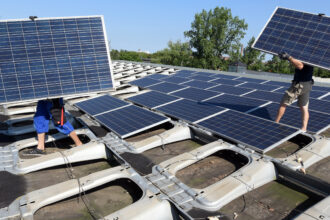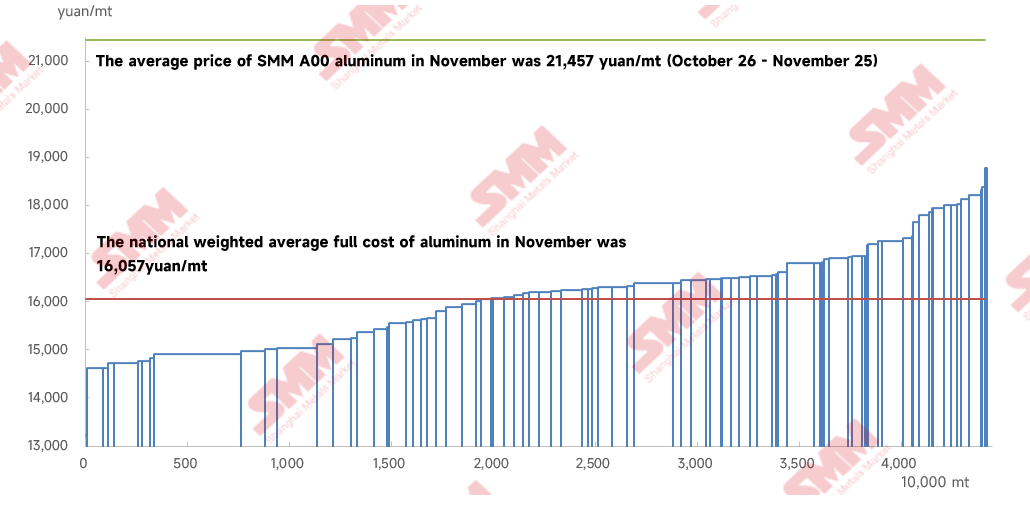At a Solar Energy Conference, the Star Is … the Soil? – Inside Climate News

Report on Sustainable Solar Farm Development and Alignment with Sustainable Development Goals (SDGs)
Introduction: Advancing SDG 7 through Sustainable Land Management
The expansion of solar energy infrastructure, critical for achieving SDG 7 (Affordable and Clean Energy), presents opportunities to advance additional Sustainable Development Goals. This report examines emerging practices in the solar industry that integrate environmental stewardship and land restoration, with a particular focus on soil management. These practices demonstrate how renewable energy projects can contribute positively to SDG 15 (Life on Land), SDG 2 (Zero Hunger), and SDG 13 (Climate Action) by enhancing biodiversity, protecting agricultural resources, and improving ecosystem health.
Synergistic Land Use in Solar Development
Enhancing Biodiversity and Ecosystem Services (SDG 15)
Solar developers are increasingly adopting practices that transform solar farms into multi-functional landscapes that support local ecosystems. This approach directly addresses targets within SDG 15 (Life on Land) by combating land degradation and halting biodiversity loss.
- Pollinator Habitats: As highlighted by soil scientist Christina Hebb of McCarthy Building Companies, planting flowering species under solar panels helps re-establish habitats for pollinators. This benefits local biodiversity and can increase crop yields on adjacent agricultural properties, supporting local food systems.
- Integrated Pest Management: Some projects introduce natural predators, such as barn owls, to manage pests that can damage solar equipment. This method promotes a balanced ecosystem and reduces reliance on chemical interventions.
- Aesthetic and Community Value: Vegetated solar sites are more aesthetically pleasing, fostering greater community acceptance and contributing to SDG 11 (Sustainable Cities and Communities).
Agrivoltaics: Merging Clean Energy and Food Security (SDG 2 & SDG 7)
Agrivoltaic systems, which co-locate agriculture and solar energy production, represent a significant advancement in sustainable land use, directly supporting SDG 2 (Zero Hunger) and SDG 7 (Affordable and Clean Energy).
- Livestock Grazing: Utilizing land under solar panels for sheep grazing provides a natural method for vegetation management while generating income for local farmers.
- Crop Cultivation: Research in the Southwest United States shows that growing crops beneath solar panels creates a symbiotic relationship. The panels’ shade protects crops from extreme heat, while moisture from the plants cools the panels, increasing their energy efficiency. This leads to higher crop yields and reduced water needs, contributing to SDG 6 (Clean Water and Sanitation).
- Improved Soil Health: A 2019 National Renewable Energy Laboratory (NREL) study confirmed that planting native grasses under solar arrays improves soil structure, reduces erosion, and enhances panel efficiency.
The Critical Role of Soil Management in Sustainable Solar Projects
Preserving Topsoil: A Non-Renewable Resource for SDG 15
Effective soil management is fundamental to ensuring that solar development aligns with the principles of SDG 15.3, which aims to restore degraded land and soil. The preservation of topsoil is a primary concern.
- The Threat: Standard construction practices, such as grading and heavy vehicle traffic, can compact or strip away topsoil, which takes thousands of years to form. This destroys the soil’s fertility and structure.
- The Solution: Hebb advocates for a policy of mandatory topsoil preservation. The recommended process includes:
- Mapping the existing topsoil before construction begins.
- Carefully removing and stockpiling the topsoil.
- Replacing the topsoil after construction is complete to restore the land’s ecological function for decades, even after decommissioning.
Regulatory Frameworks and Voluntary Adoption
Policy is beginning to reflect the importance of sustainable soil practices in solar development.
- State-Level Mandates: States like New Jersey, Virginia, and Illinois have implemented regulations requiring soil restoration, topsoil replacement, and Agricultural Impact Mitigation Agreements for solar projects.
- Federal Guidance: In 2024, the USDA’s Natural Resources Conservation Service (NRCS) released guidance encouraging developers to minimize soil disturbance and preserve topsoil.
- Corporate Responsibility: Currently, many of these best practices are adopted voluntarily by companies driven by internal sustainability goals and a commitment to responsible production, aligning with SDG 12 (Responsible Consumption and Production).
Case Study: Reconciling Energy and Agriculture in Illinois
An Opportunity to Restore Degraded Farmland
In Illinois, the development of solar farms on agricultural land provides an opportunity to improve upon existing land use patterns that have degraded soil health. Amanda Pankau of the Prairie Rivers Network notes that decades of industrial farming for non-food crops like ethanol have depleted the state’s rich topsoil.
- Restorative Potential: Solar projects can act as a temporary, restorative land use. By planting deep-rooted prairie vegetation, solar farms can help rebuild soil health and carbon content over their operational lifetime.
- Future Agricultural Use: This approach ensures the land is not permanently lost to development. Pankau emphasizes that “solar is borrowing the land,” which can be returned to farming in an improved condition in the future, securing long-term food production capabilities in line with SDG 2.
Conclusion: A Holistic Approach to the Energy Transition
Integrating sustainable land and soil management practices into solar farm development is essential for a truly holistic energy transition. By moving beyond a singular focus on energy generation, the solar industry can become a key partner in achieving a broad range of Sustainable Development Goals, including restoring ecosystems (SDG 15), ensuring food security (SDG 2), and taking comprehensive climate action (SDG 13).
Analysis of Sustainable Development Goals in the Article
1. Which SDGs are addressed or connected to the issues highlighted in the article?
-
SDG 2: Zero Hunger
- The article discusses “agrivoltaic” systems where crops are grown under solar panels, leading to higher yields. It also mentions sheep grazing on grasses planted at solar farms, which supports local farmers and food production. This directly connects to sustainable agriculture and food systems.
-
SDG 7: Affordable and Clean Energy
- The core topic of the article is the expansion and sustainable management of solar farms. This directly addresses the goal of increasing the share of renewable energy in the global energy mix.
-
SDG 11: Sustainable Cities and Communities
- The article highlights the importance of land use planning and policy in managing the expansion of solar farms. It mentions state-level regulations in New Jersey, Virginia, and Illinois that govern how solar projects handle soil and land, which is a key aspect of sustainable community and land management.
-
SDG 13: Climate Action
- Solar energy is a primary tool for mitigating climate change. The article’s focus on making solar energy more sustainable contributes to the broader goal of climate action by ensuring that the solutions to climate change do not create other environmental problems.
-
SDG 15: Life on Land
- A major theme is the protection and restoration of terrestrial ecosystems. The article details methods to protect soil health, prevent land degradation, restore pollinator habitats, and enhance biodiversity on lands used for solar farms. It explicitly discusses combating soil compaction, preserving topsoil, and re-establishing habitats for species like pollinators and barn owls.
2. What specific targets under those SDGs can be identified based on the article’s content?
-
SDG 2: Zero Hunger
- Target 2.4: “By 2030, ensure sustainable food production systems and implement resilient agricultural practices that increase productivity and production, that help maintain ecosystems, that strengthen capacity for adaptation to climate change… and that progressively improve land and soil quality.” The article’s description of agrivoltaics, where farmers report “higher yields and lower irrigation needs,” and the practice of improving soil health under solar panels directly align with this target.
-
SDG 7: Affordable and Clean Energy
- Target 7.2: “By 2030, increase substantially the share of renewable energy in the global energy mix.” The entire context of the article, which focuses on the construction and management of large-scale solar projects across the United States, supports this target of expanding renewable energy infrastructure.
-
SDG 11: Sustainable Cities and Communities
- Target 11.3: “By 2030, enhance inclusive and sustainable urbanization and capacity for participatory, integrated and sustainable human settlement planning and management in all countries.” The article references specific state-level policies and agreements, such as New Jersey’s soil restoration requirements, Virginia’s rules for protecting prime farmland, and Illinois’ Agricultural Impact Mitigation Agreements. These are examples of integrated and sustainable land use planning.
-
SDG 13: Climate Action
- Target 13.2: “Integrate climate change measures into national policies, strategies and planning.” The development of solar farms is a key climate change mitigation measure. The article discusses policies and best practices for making these projects sustainable, which represents the integration of these measures into land use and energy planning.
-
SDG 15: Life on Land
- Target 15.3: “By 2030, combat desertification, restore degraded land and soil, including land affected by desertification, drought and floods, and strive to achieve a land degradation-neutral world.” The article’s central argument, championed by soil scientist Christina Hebb, is the need to prevent soil degradation by saving topsoil, avoiding compaction, and improving soil health during solar farm construction.
- Target 15.5: “Take urgent and significant action to reduce the degradation of natural habitats, halt the loss of biodiversity and, by 2020, protect and prevent the extinction of threatened species.” The practice of “planting flowering species [to] help re-establish pollinator habitat and increase pollinator species” is a direct action to halt biodiversity loss and restore habitats.
3. Are there any indicators mentioned or implied in the article that can be used to measure progress towards the identified targets?
-
For SDG 2 (Target 2.4)
- Crop Yields: The article explicitly states that farmers in Arizona and Colorado have reported “higher yields” in agrivoltaic systems. This can be measured as the volume of crops produced per unit of land.
- Water Use Efficiency: The mention of “lower irrigation needs” implies an improvement in water efficiency, which can be measured by the amount of water used per unit of crop yield.
- Improved Soil Quality: The focus on saving topsoil and improving soil structure provides a basis for measuring soil organic matter, nutrient content, and water retention capacity.
-
For SDG 7 (Target 7.2)
- Renewable Energy Capacity: The article discusses the construction of “large-scale solar projects across the country,” implying an increase in the total installed capacity of solar energy, measured in megawatts or gigawatts.
-
For SDG 11 (Target 11.3)
- Adoption of Sustainable Land Use Policies: The article mentions that “only a few states require that kind of soil care,” such as New Jersey, Virginia, and Illinois. An indicator would be the number of state or local governments that have implemented policies or regulations for sustainable land management in renewable energy projects.
-
For SDG 15 (Targets 15.3 and 15.5)
- Area of Land Under Sustainable Management: The proportion of solar farm acreage where practices like topsoil preservation, planting native vegetation, and biodiversity enhancement are implemented.
- Topsoil Depth: The article mentions a specific policy in New Jersey requiring construction projects to “replace at least five inches of topsoil.” This provides a direct, measurable indicator of soil restoration.
- Biodiversity Levels: The goal to “increase pollinator species” can be measured by monitoring the population counts and diversity of pollinators on solar farm sites compared to control sites.
4. Table of SDGs, Targets, and Indicators
| SDGs | Targets | Indicators Identified in the Article |
|---|---|---|
| SDG 2: Zero Hunger | 2.4: Ensure sustainable food production systems and implement resilient agricultural practices. |
|
| SDG 7: Affordable and Clean Energy | 7.2: Increase substantially the share of renewable energy in the global energy mix. |
|
| SDG 11: Sustainable Cities and Communities | 11.3: Enhance inclusive and sustainable urbanization and capacity for sustainable human settlement planning. |
|
| SDG 13: Climate Action | 13.2: Integrate climate change measures into national policies, strategies and planning. |
|
| SDG 15: Life on Land | 15.3: Combat desertification, restore degraded land and soil. 15.5: Halt biodiversity loss. |
|
Source: insideclimatenews.org
What is Your Reaction?
 Like
0
Like
0
 Dislike
0
Dislike
0
 Love
0
Love
0
 Funny
0
Funny
0
 Angry
0
Angry
0
 Sad
0
Sad
0
 Wow
0
Wow
0















































/environment-climate-change-and-health-(ech)/water-sanitation-hygiene-and-health-(wsh)/landfill-tuvalu-36092.tmb-1200v.jpg?sfvrsn=5c21fe40_1#)


.jpg.webp?itok=0ZsAnae9#)

























